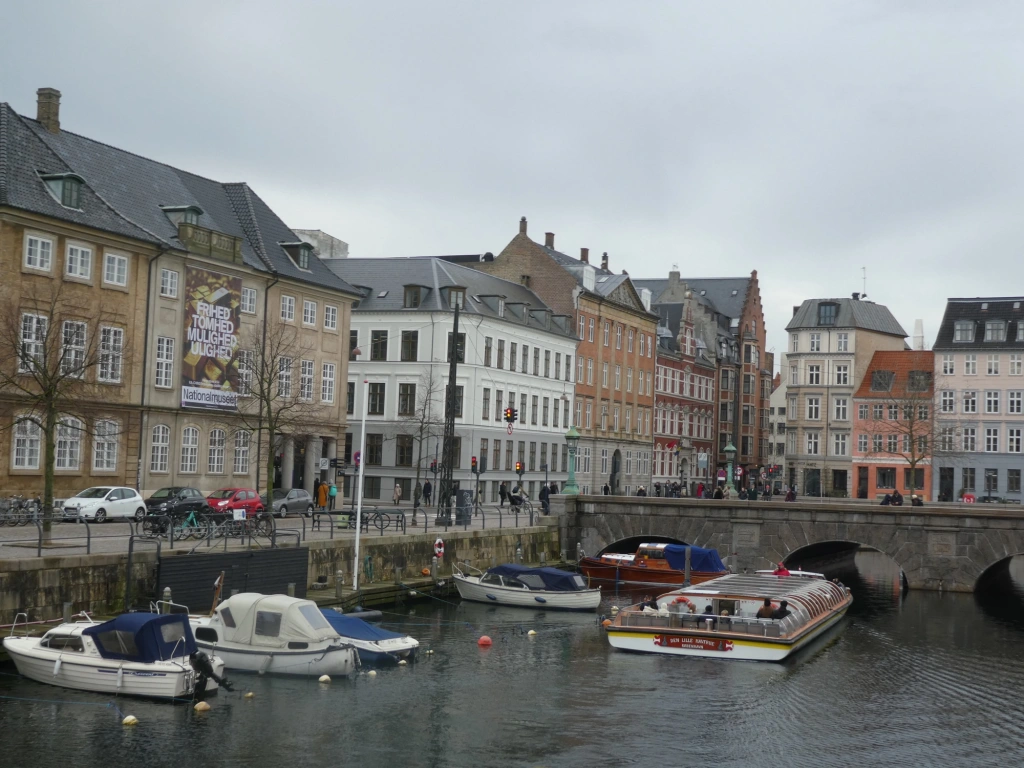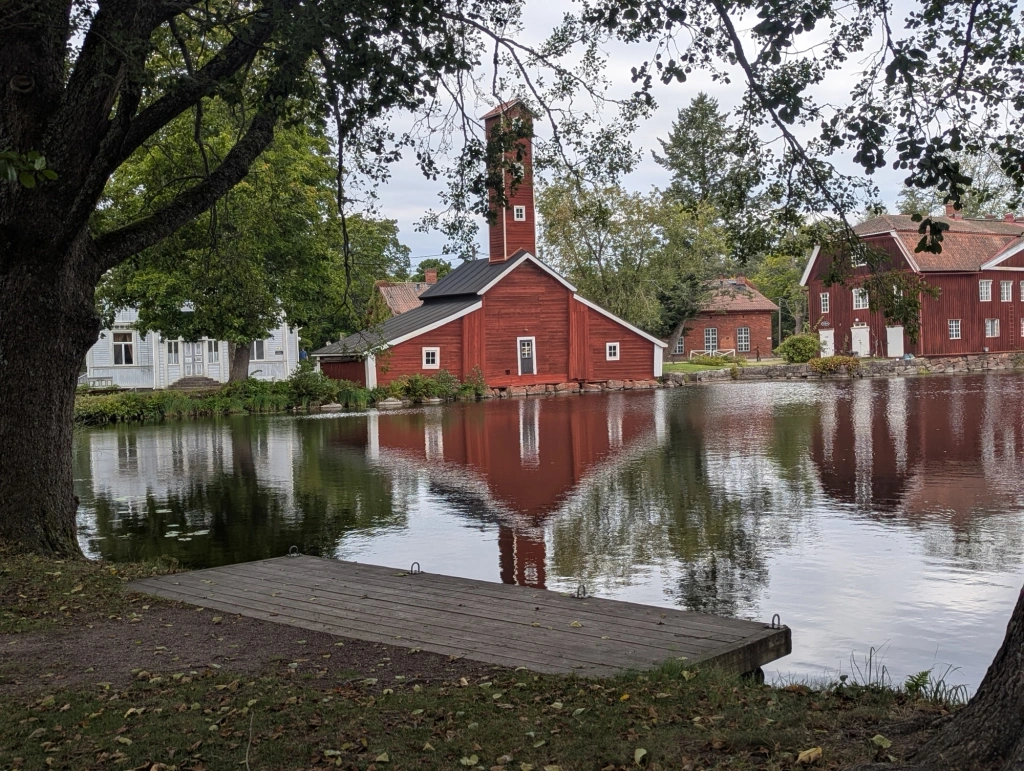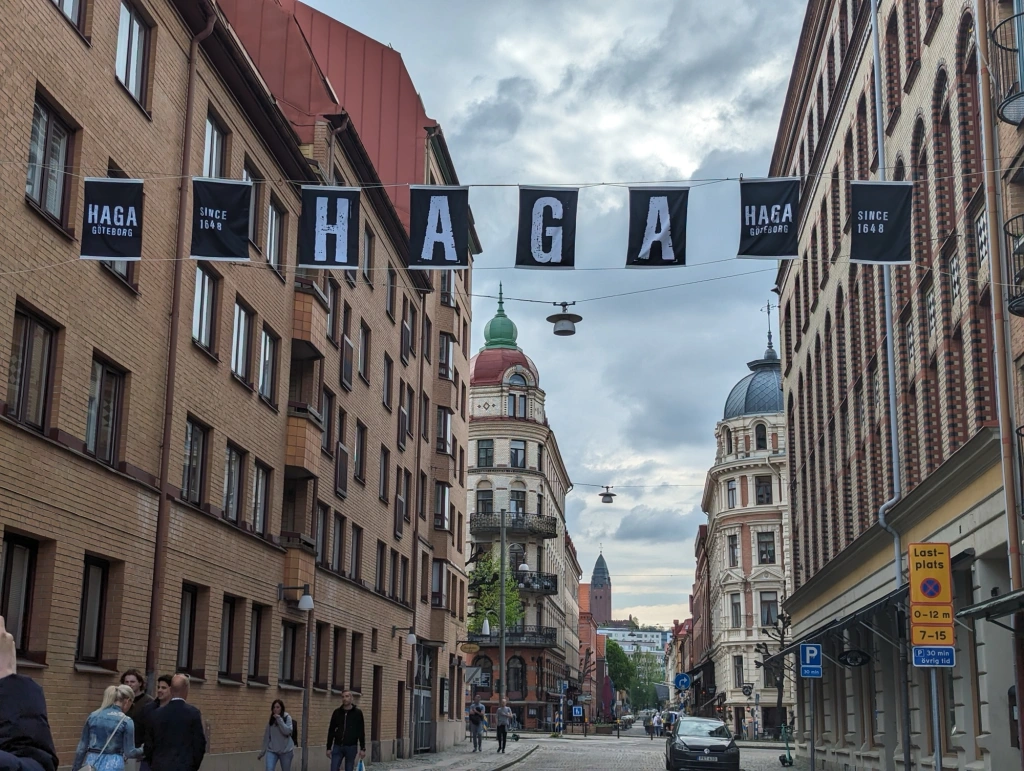It’s always fun to explore somewhere new, so we woke with excited anticipation in readiness for our early morning Ryanair flight from London Stansted to Copenhagen’s Kastrup Airport. With a flight time of just 1 hour 45 minutes we were touching down at 10.45 a.m. local time.
With Scandinavian efficiency, we passed through immigration and were reunited with our luggage in minutes and soon following signs to the airport’s railway station in Terminal 3. Before leaving home we’d downloaded the Copenhagen Card to our phones which offers free access to over 80 attractions and free transport within the entire capital region. Cards are available in 1-5 day durations and our 72 hour card cost 889 DKK (£102). As the cards are digital, we were able to activate them in the arrivals hall before boarding the train into the city centre, avoiding the lengthy queues of people waiting to buy tickets at the DSB counter and machines. (Single tickets 36 DKK (£4.13). Trains run every 10 minutes to Copenhagen Central with the journey taking just 15 minutes.
We’d arranged to stay at the Scandic Copenhagen, approximately a 12 minute walk from the station. This impressive large hotel has a welcoming entrance foyer where we were greeted by Anne, one of the friendly receptionists on duty who soon had us checked into our junior suite on the top floor. As this floor is reserved for suites and meeting rooms it benefits from its own designated lift which whisked us up to the 18th floor in seconds.
On opening the door, we were thrilled with our suite with its comfortable lounge and separate bedroom. Views from the windows overlooked St. Jorgen’s Lake and the Copenhagen Planetarium.
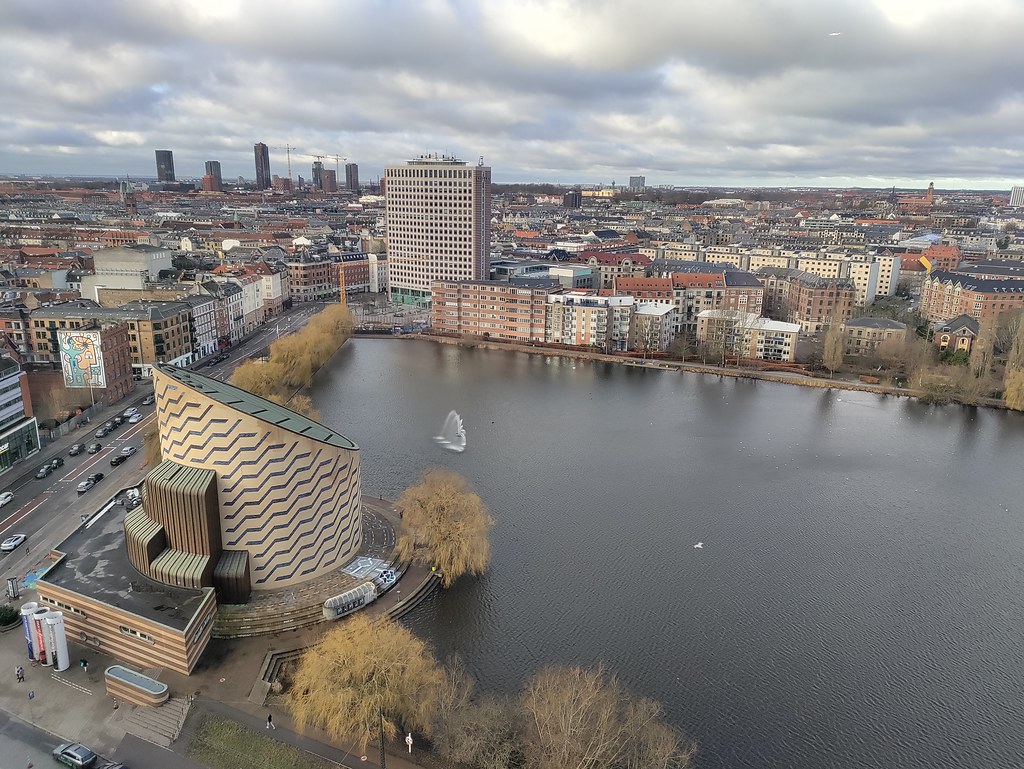
After making ourselves cups of tea we were soon ready to start exploring the city and with the hotel’s central location it was just a short walk to City Hall Square, one of Copenhagen’s main squares. The square is an important gathering place for the Dane’s, be it National celebrations, exhibitions, protests or just meeting up with friends.
Not much was happening on the overcast day when we were there but we noticed two hot dog stands so made a beeline for one of them as we’d read that hot dogs are the Danish street food of choice.
Made to order, ours were very tasty and came topped with crispy fried onion, pickled cucumber and mayonnaise and mustard.
The square is the former hay market and dominating it is the City Hall, which was constructed between 1892-1905 and designed in National Romantic Style. It is one of the tallest buildings in Copenhagen with its tower reaching to a height of 105.6m (345 ft).
The building is currently used for council meetings, weddings and national celebrations with visitors welcome to look inside to admire its magnificent Great Hall with its ornate wood carvings and mosaic tiled walls.
Also of note is the Jens Olsen’s World Clock located in a a small room just off the entrance lobby. This gilded horological masterpiece is geared to calculate global times, dates and planetary positions with remarkable precision. Following more than 10 years of calculations and careful calibrations the clock has 15,448 working parts and was set in motion in December 1935 by King Frederick IV. The clock is wound once a week and is one of the most precise mechanical clocks in the world. Guided tours of the building are available daily and included in the Copenhagen Card, more details can be found here. Just around the corner from the City Hall lies the Museum of Copenhagen.
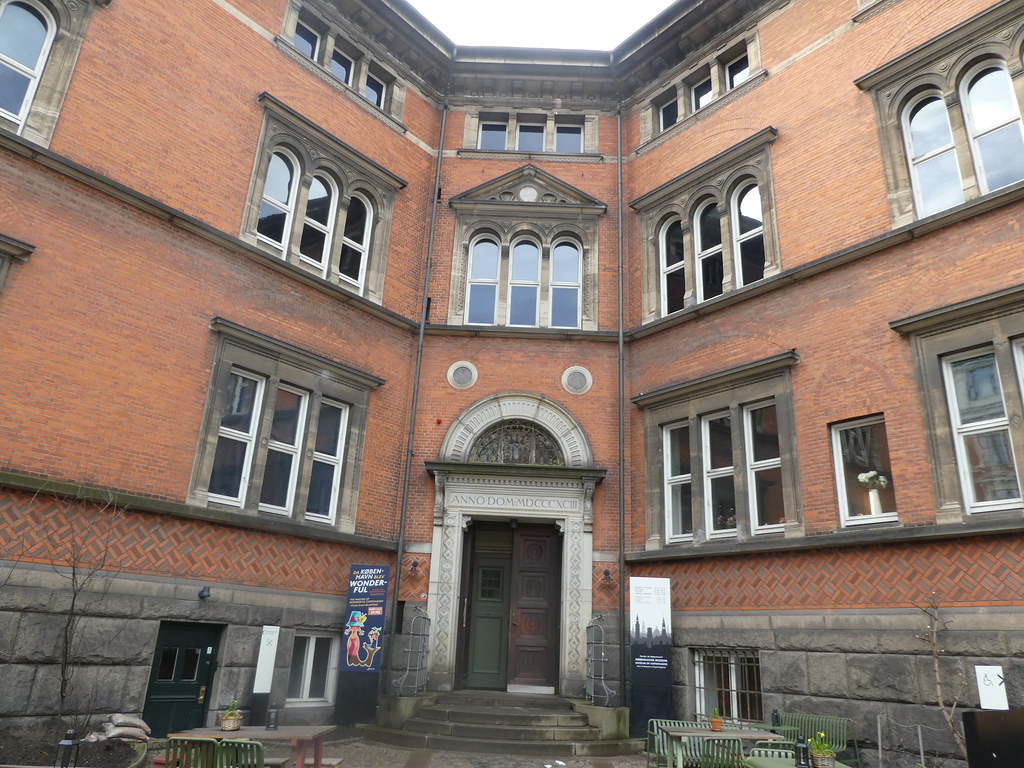
Located in a beautiful, historic building its galleries tell the story of Denmark’s capital from the Viking Age right up to modern times. Numerous exhibitions took us through the key events that have played a central role in the city’s history.
These included the Copenhagen homes of the Royal Family, Rosenborg Castle and City Hall Square. The museum is also home to a gift shop and cosy cafe with additional courtyard seating for warmer days. Entrance 90 DKK (£10.34) and included in the Copenhagen Card.
Across the road from the Museum of Copenhagen stands the National Museum of Denmark. The museum is located in the former Prince’s Palace built by court architect Nicolas Eigtved in 1743. Standard admission 130 DKK (£14.33) and also included in the Copenhagen Card.
This vast museum showcases everything from Viking treasures to Egyptian mummies and Renaissance art. There’s a large collection of archaeological finds including the Huldremose Woman, whose well preserved remains are estimated to date back to the first decade of the first century AD. The museum also boasts a large ethnographical collection, classical antiquities, coin and medical galleries.
Leaving there, we wandered through the city centre to Ved Stranden, a canal side street which runs along a short section of the Slotsholmen Canal. Stromma Sightseeing Cruises depart from a berth opposite Christiansborg Palace and as these are also included in the Copenhagen Card we decided to hop onboard. Standard fare 109 DKK (£12.52).
It had started raining but as the boats have a large area of indoor seating, it didn’t matter too much. Our one hour cruise gave us an opportunity to view the city from the perspective of the water, passing historical landmarks such as the Little Mermaid and Amalienborg Castle.
Speaking from a microphone, the tour guide provided an informative commentary, telling us about landmarks, the city’s history and snippets of everyday life in Copenhagen, making it enjoyable for everyone. The boat passed through a number of the city’s low bridges with our guide reminding passengers out on deck to be seated so that they didn’t bump their heads as there was only a small clearance due to high water levels. I would definitely recommend taking one of these boat trips on your first day as it provided us with an ideal orientation to the layout of the city centre, giving us ideas of districts to explore later ourselves.
After popping into one of the city’s cosy cafes for a warming drink we headed to one more attraction in the heart of the old town, that being the Guinness World of Records Museum. Standard admission 169 DKK (£19.40) and included in the Copenhagen Card.
The Guinness World of Records Museum in Copenhagen is the only one of its type in Europe, exhibiting a number of officially recorded world records. Divided into several rooms over two floors the 11 small galleries include information boards, trivia and interactive displays from the world’s tallest man at around 8 ft tall to bizarre records such as the record for the number of boiled eggs peeled in a given time. We found the museum to be light-hearted and entertaining and it would be a good place to bring children. It’s not all that big so allow between 45 minutes to an hour for a visit.
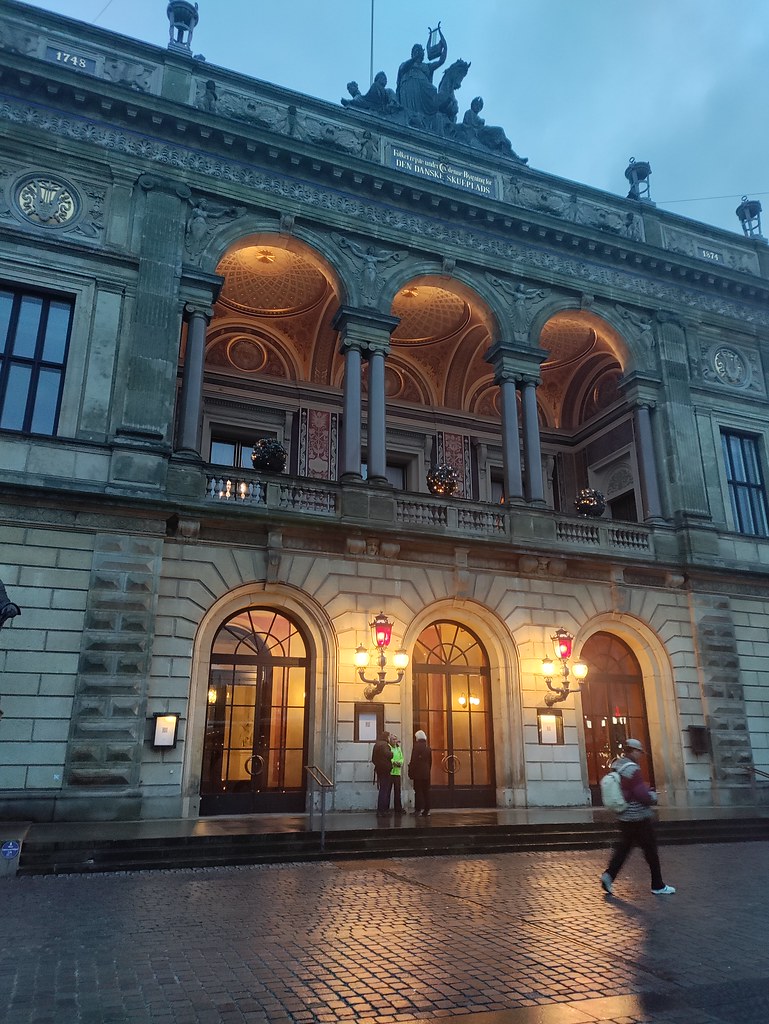
I’m unsure if we would have visited if we didn’t have the Copenhagen Card as I consider £19.40 too expensive for what the museum offers especially as the city’s main cultural attractions all cost considerably less, however it was a fun way to complete our first day in Copenhagen.

